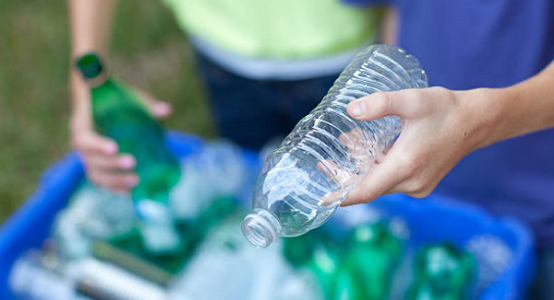PDXL for Creating Thermoplastic Polymer Can be Recycled from Mixtures of Plastic Waste https://omnexus.specialchem.com/news/industry-news/ductile-strong-recyclable-thermoplastic-000225495
Coates and his team had been working to develop sustainable polymers that can be used in energy storage and conversion materials when they realized their polymer – poly(1,3-dioxolane) or PDXL – was well-suited for creating a thermoplastic – a material with properties that allow it to be melted, recycled and remolded.
The researchers built their polymer from a cyclic acetal monomer called dioxolane, which is synthesized from potentially biorenewable formaldehyde and ethylene glycol feedstocks. Polyacetals are strong candidates for creating recyclable thermoplastics because they are stable upward of 300 degrees Celsius, but depolymerize at relatively low temperatures – usually below 150 degrees Celsius – in the presence of an acid catalyst.
They are also inexpensive and can be biologically sourced. However, polyacetals have not seen prior use because the polymer chains are generally too short to achieve the mechanical strength necessary for commercial applications.
“We wanted to develop a new way to make polyacetals that would give us control over the length of the polymer chains,” Abel said. “Ultimately, we were able to make really high molecular weight polyacetals that were surprisingly ductile and strong as compared to their more brittle, low molecular weight counterparts.”
“If you want to make a cup that doesn’t crack when you flex it, you need to get really high molecular weight,” Coates said.
Using a process called reversible-deactivation cationic ring-opening polymerization, the researchers were able to connect the monomers into long chains of PDXL that have high molecular weight and high tensile strength.
The resulting thermoplastic is strong and flexible enough to be used for large-scale applications such as packaging products. The team demonstrated this potential by creating several prototype items, including protective pouches, molded packaging and inflatable air pillows of the sort Amazon uses to pad their boxes.
“Right now, nearly 40% of plastic is produced for packaging products that are used briefly and then disposed. PDXL has the necessary strength for packaging, but instead of throwing it away, we can collect and repurpose it using a very efficient chemical recycling process. This makes it a perfect candidate for a circular polymer economy,” Snyder said.
The recycling process is so efficient that PDXL can even be depolymerized from complex mixtures of plastic waste. The team mixed PDXL with other commodity plastics like polyethylene terephthalate, polyethylene and polystyrene. After applying a reusable acid catalyst and heat, they were able to recover 96% of the pure dioxolane monomer, demonstrating that it can be easily isolated from common contaminants like dyes and plasticizers. The recovered monomer was then repolymerized to PDXL, illustrating the circularity of polyacetal chemical recycling.
This points to the polymer’s most significant attribute: its sustainability.
“It takes a lot of fossil fuels to make these plastics, and the carbon footprint of common polyethylene or polypropylene is really bad. So, we’ve got to be better at how we make them,” Coates said. “If you can have a way that you can chemically recycle the polymer, it’s not going to go in the ocean, right? And then instead of using all this energy to take oil out of the ground and break it up in little pieces and spend all this energy, all we have to do is just heat up the polymer and boom, we have a monomer again.”
